Everyone rides in an SUV these days. About the only family that still parks a sedan in the driveway is the Simpsons, still going after 30 years.
They dabbled with an SUV, the Canyonero, but it didn’t end well. Marge still drives a station wagon, but there aren’t many of those left either. And so most nuclear families are rolling around in an SUV.
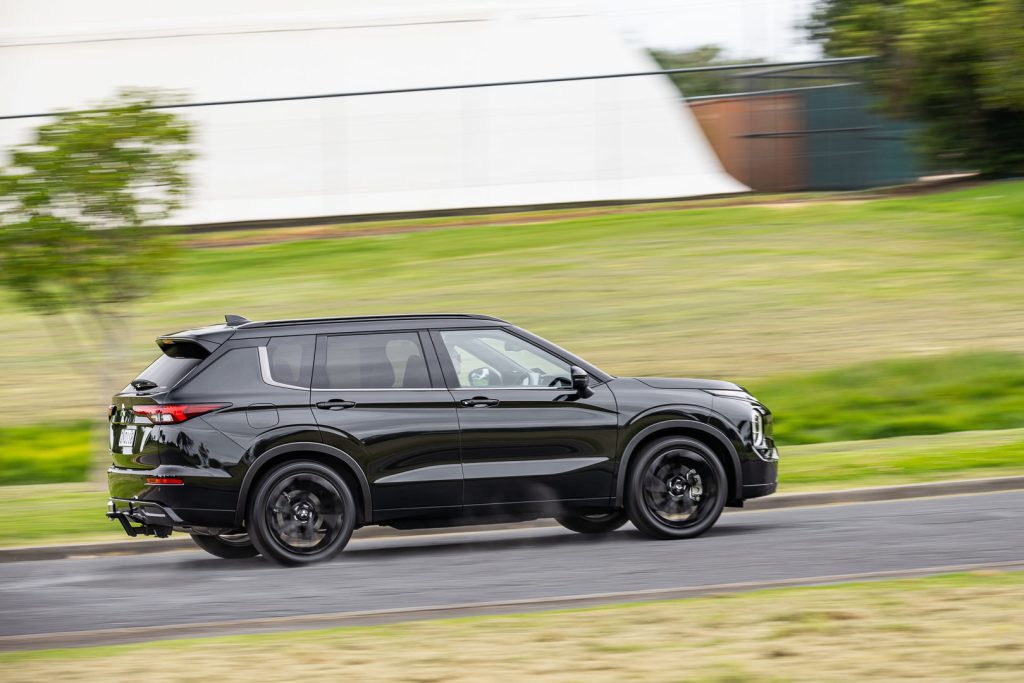
Some may refer to them as dross, ‘fodder for disinterested folk’, but most just want something that can take the kids to football practice, and sometimes carry a few extra players along to the game.
They want something with enough boot space to get the groceries but also something that is large enough to occasionally haul something big home from the hardware store.
It also has to tow the caravan, drive along the beach, and amble along in traffic in relative comfort, and have all the mod cons for your connected lifestyle.
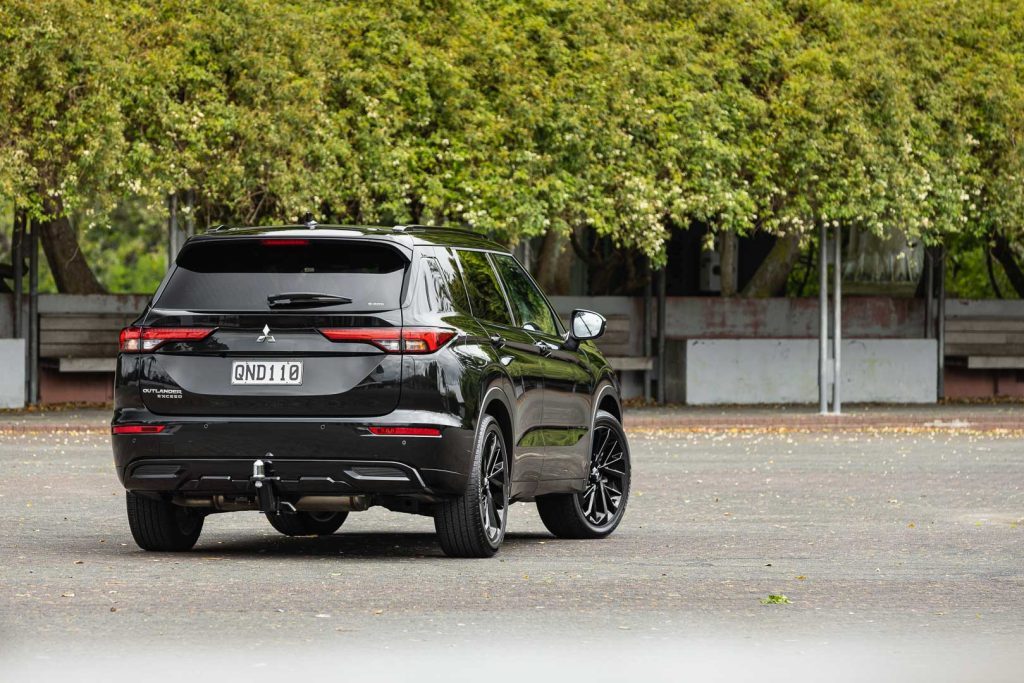
Sounds like a job for the mid-sized SUV then. Not particularly soul stirring, but mighty handy for doing life.
This is why they have taken over, except in Springfield, which is frozen in time. Surprisingly, Mitsubishi’s best seller isn’t its mid-size SUV, which is the Outlander.
And surprisingly this is our first drive of the latest generation that renewed back in 2021.
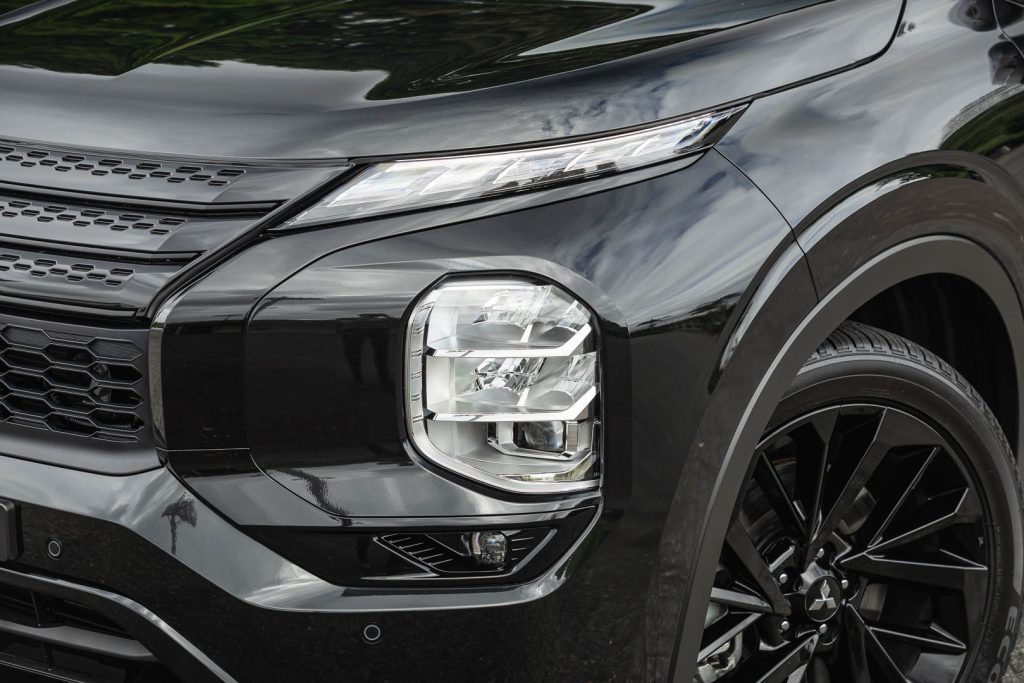
Being a popular segment, Mitsubishi offers hundreds of Outlander options; 2WD and AWD, the choice of a plug-in hybrid or a 2.5 petrol, some seat five while others can take seven.
And there are base models, mid-spec and upper variants. Plus now this new top-of-the-range Outlander, Exceed. That nameplate predates the Simpsons but it rightly sits on this most fancy of Outlanders.
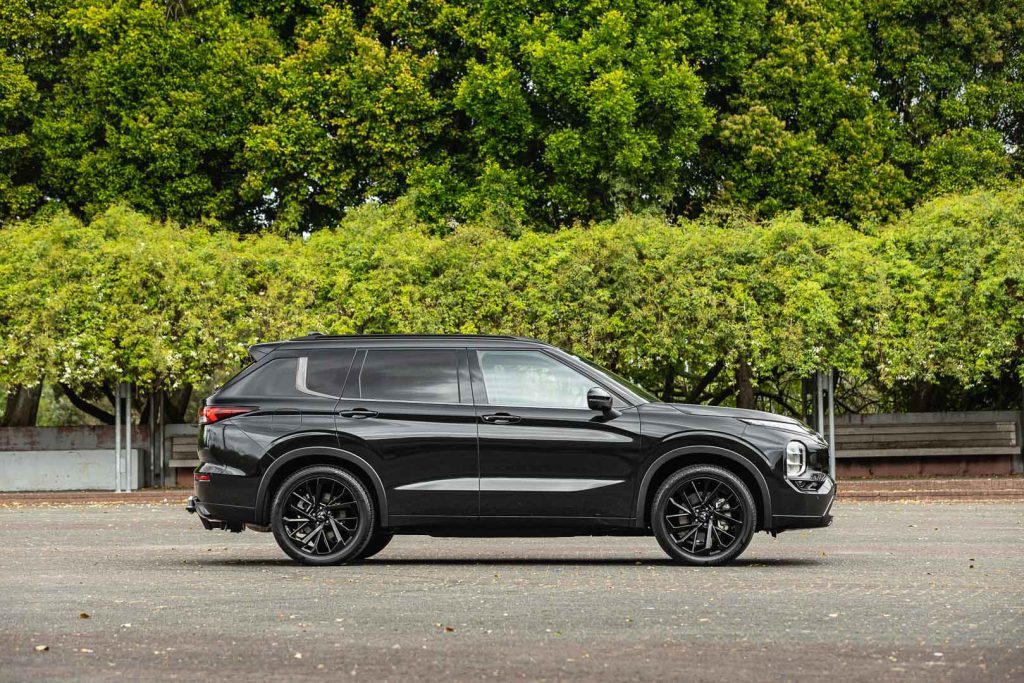
The Exceed brings the number of Outlander models to ten, although really there are five grades, each with the choice of 2WD or AWD. There are also three versions of the plug-in hybrid, though these carry quite the premium.
The VRX PHEV is $75,990 whereas the equivalent VRX petrol 4WD is $57,990. At the other end of the range, Outlander is one of the more affordable choices in the market, starting at $41,990 for the 2WD LS.
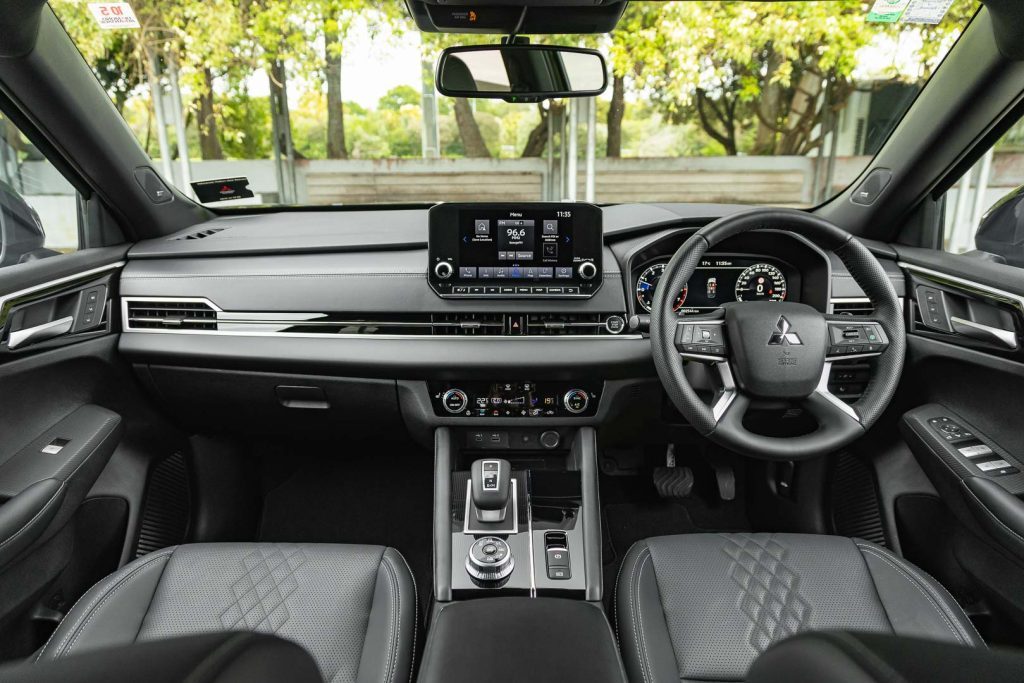
It might be a base model but you get Android Auto and wireless CarPlay, a smart key, dual zone climate air, enough active safety including adaptive cruise control, and plenty of airbags with one in between the front passengers.
So not bad value in the scheme of things. However, private buyers (and small business owners) love going for the top of the range.
And that’s the Exceed, which is $56,990 and $61,900 for the AWD variant. It is distinguished by a ‘blackout’ exterior treatment, although that’s hard to pick on our tester; the black paint job does nothing to highlight the package.
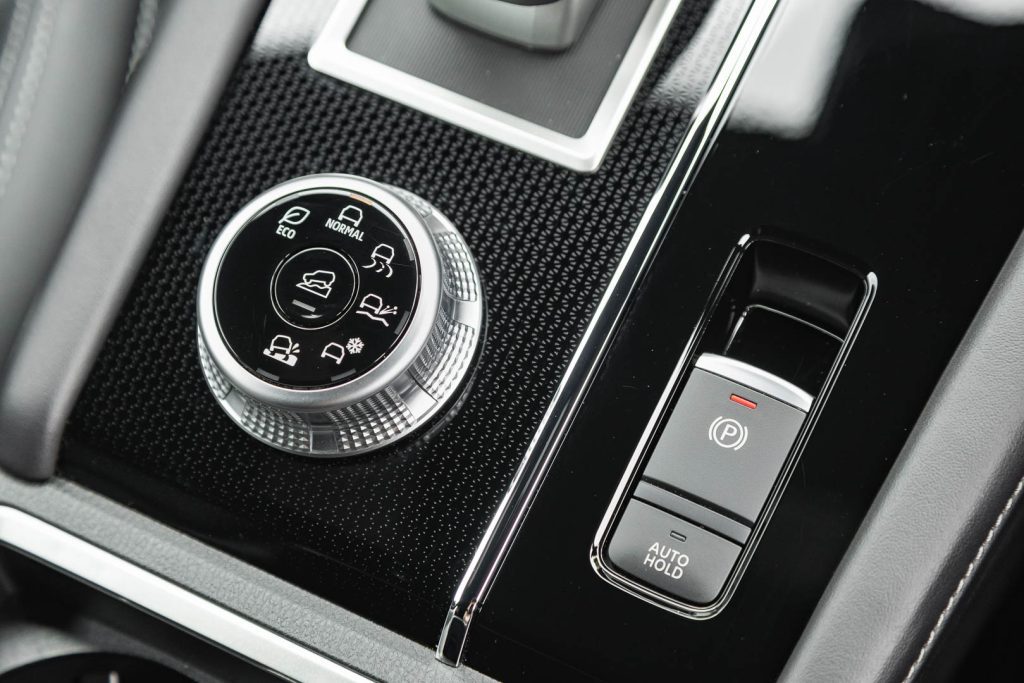
Choose one of the other colours (red, grey or white) and your roof rails, wheels, mirrors, grille and bumper garnishes will stand out in contrasting black.
The roof is also blacked out, yet another reason to not go noir. Besides, black is so damn hard to keep clean and is a heat soak in summer.
Inside the Exceed is spruced up too with a dark headlining and semi-aniline leather seats with silver stitching. There’s also MiPilot, an improved adaptive cruise system.
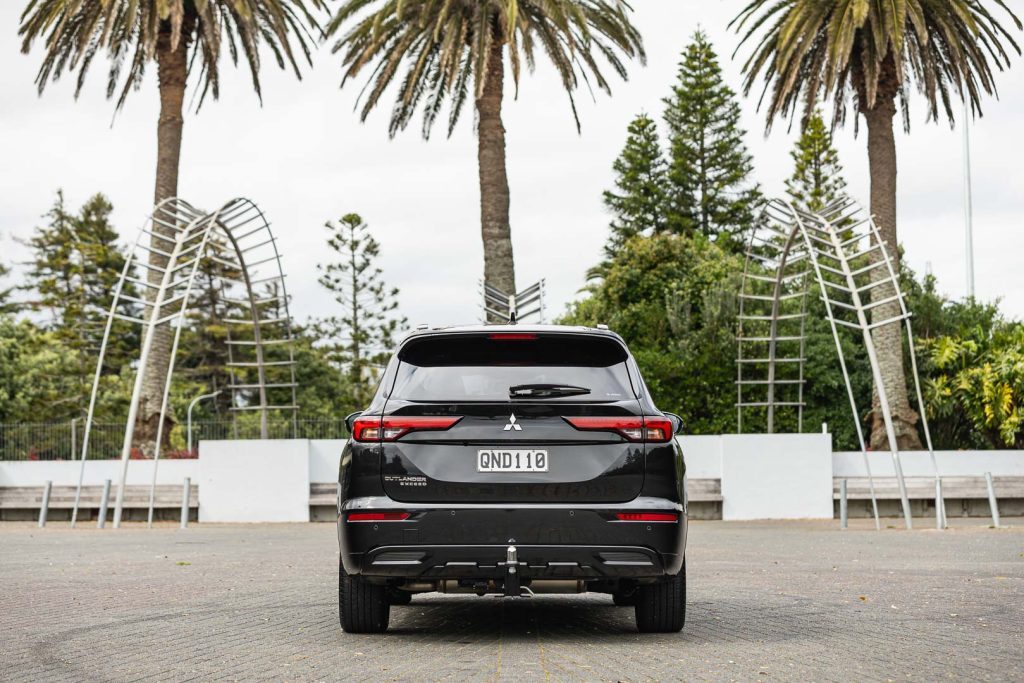
This is mainly for use on motorways, where it keeps you centred in the lane, and manages the stop-start nature of crawling traffic. And it all works pretty well too.
Even the lane keeping isn’t too annoying while speed limit info is helpfully relayed. There is both a full digi and head-up display but thankfully no driver monitor to tell you off.
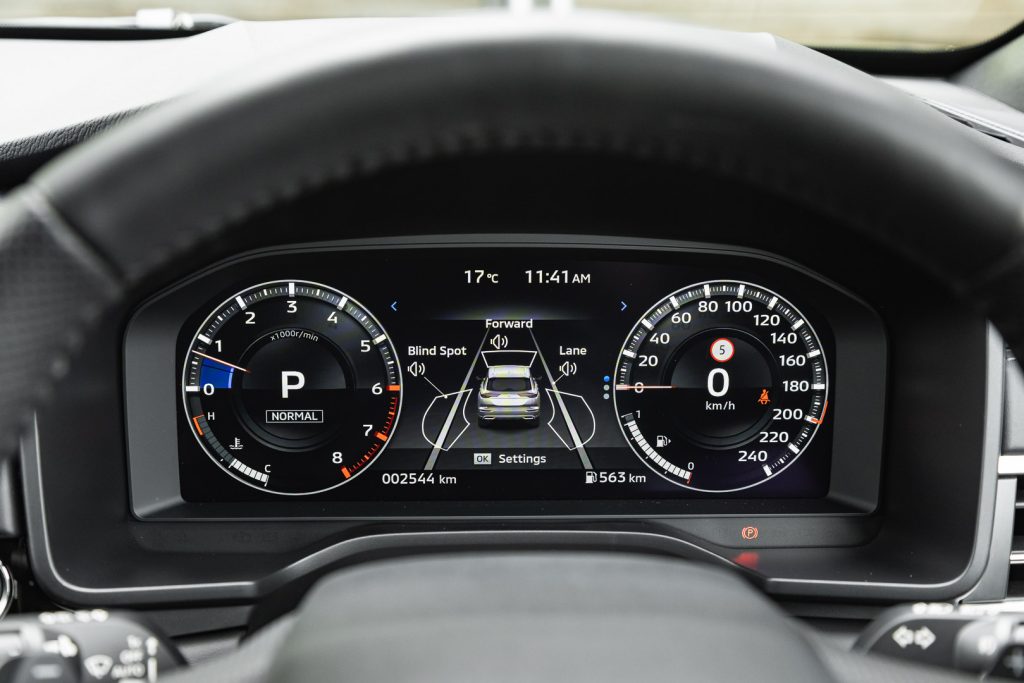
This Outlander exceeded our expectations (had to get it in somewhere) inside. There are many soft, classy surfaces here, the doors and seats with a luxo-like diamond patterning.
Pleasingly, it is hard to find any coarse plastics here, unlike in the previous gen. It’s a straightforward set-up too; an easy to comprehend shifter, separate HVAC controls and a touchscreen that has a few hard buttons to access your high-use features.
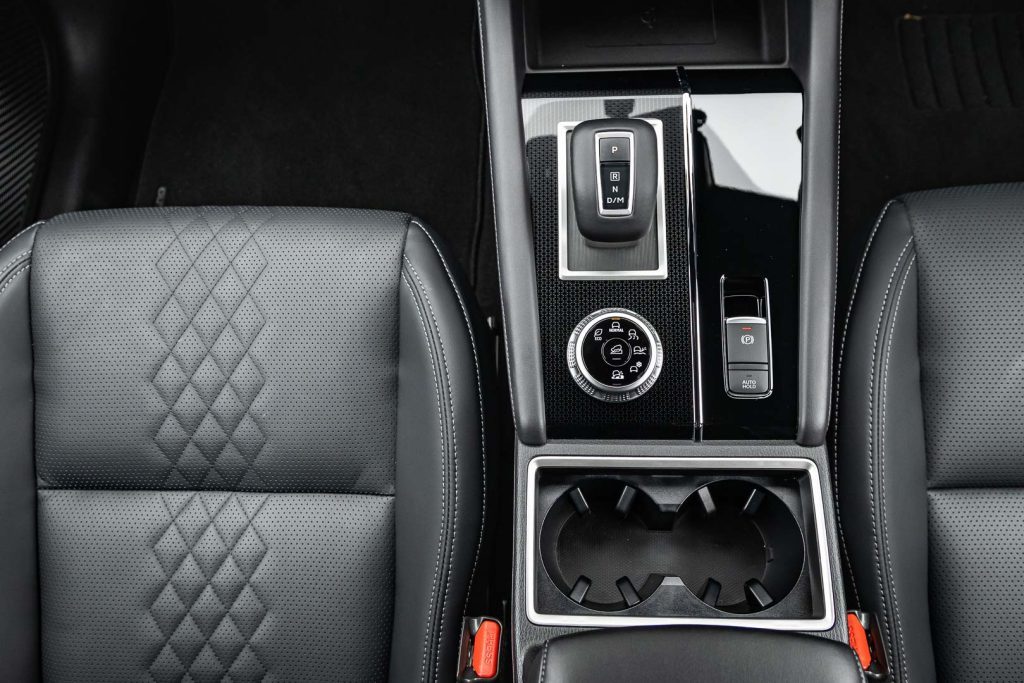
While the screen is small, it’s clear and the system in behind is quick enough. We like the camera with both a surround view, and when you click the camera button again, you can see where the front left wheel is tracking; no excuses for kerbing those 20s then.
Both the driving position and seat are sorted, the latter with a massaging function even. Okay, it’s not the best ever, but it’ll alleviate the squirming on long distance travel.
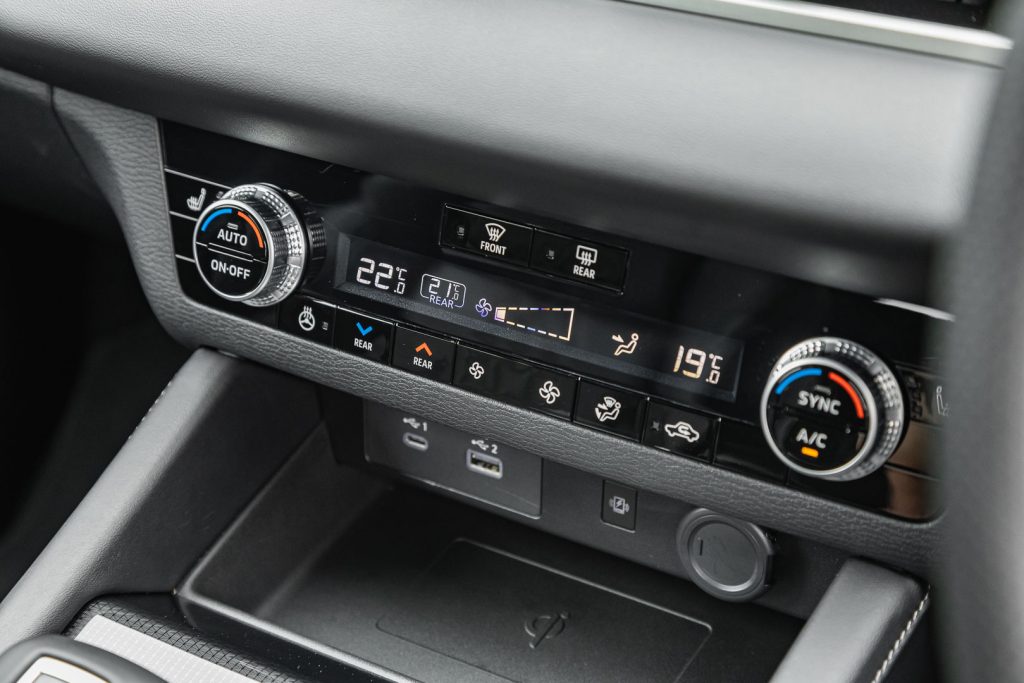
This gets a heated wheel too, which we have to admit is rather nice during the chilly months. About the only gripe concerns cabin storage; there’s not much of it.
No problems with space in the back though, even for the child in the middle, who should have enough legroom with minimal intrusion from the floor hump.
Outboard seats get warmers and while Marge would struggle with the headroom, the glass roof robbing space, the others will be fine. Maggie will be sorted with the usual Isofix points, and window shades.
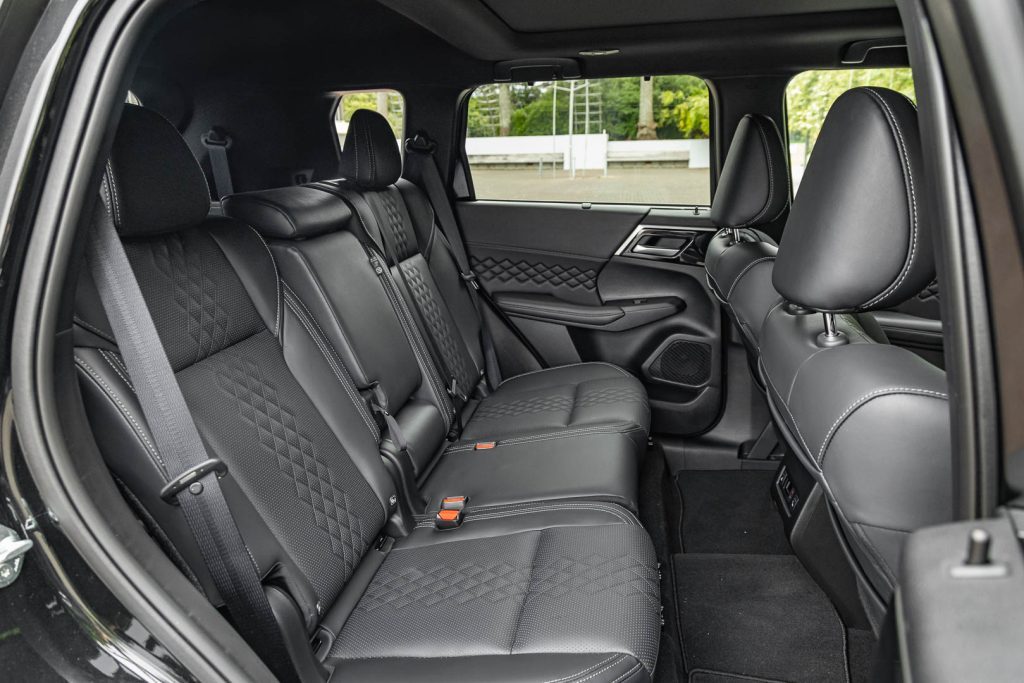
The middle row is on sliders, which you’ll need to shimmy forward if you have extras in need of a lift. Exceed is a seven seater, but best think of it as a 5+2 arrangement, for the third row is tight, with legroom at a premium.
While access is straightforward, deploying the seats can be tricky. If the second row is too far back, they get snagged, and once in place, you wonder ‘where are the headrests?’
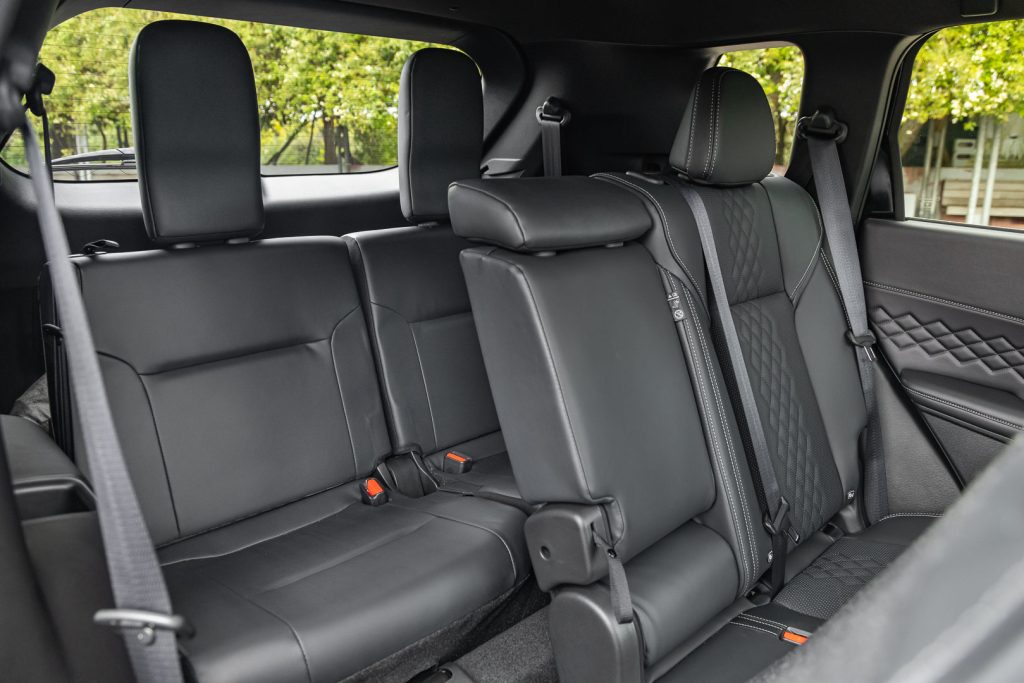
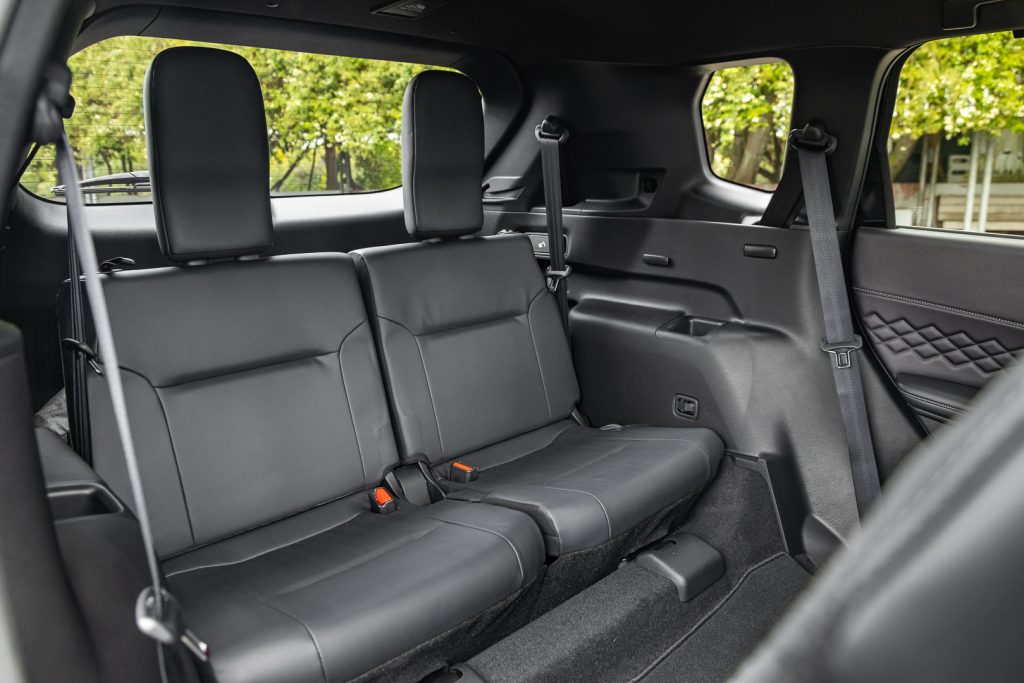
Those you’ll find under the boot floor, and are a little tricky to wriggle into place. Certainly not the smartest set-up you’ll find.
When you have that extra long something to take home, you can flop the rear seats down via remote levers in the boot, to form a flattish load area, which is about 1.7m long.
The boot itself is okay for space, with just under 500L on offer (to the window line).
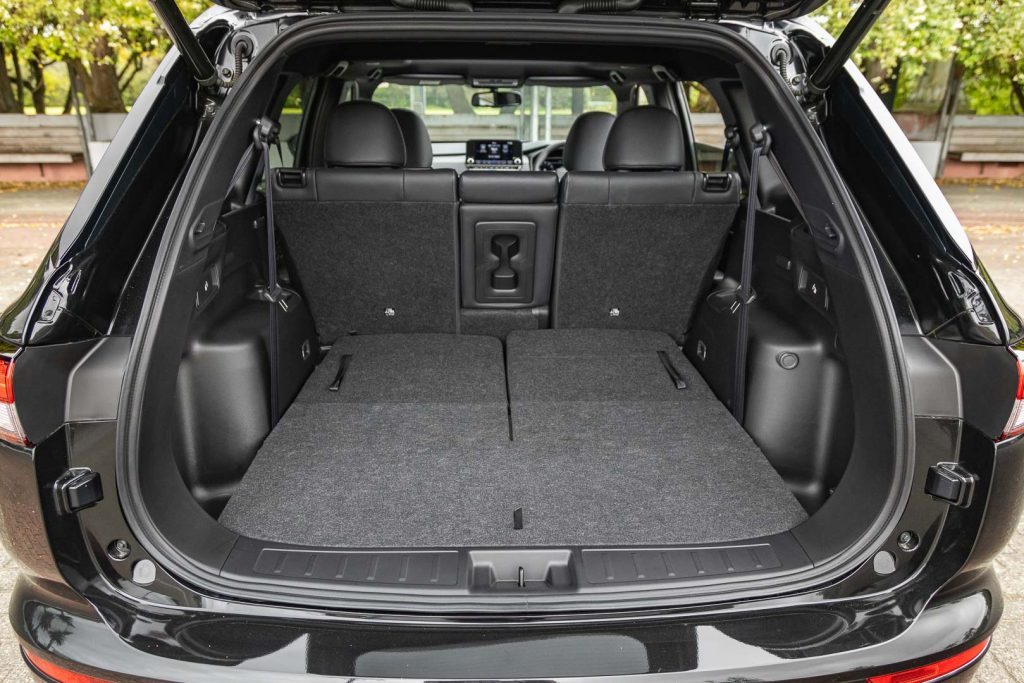
The 2.5-litre Outlander is a conventional SUV, a four cylinder with no electrical bits, sending 135kW and 244Nm through a CVT auto and out to the front wheels. In the AWD models, when those spin, torque is quickly redirected rear for extra traction.
And without sounding mean-hearted, this is exceptionally average. It does nothing wrong exactly, but there are better operators in this segment.
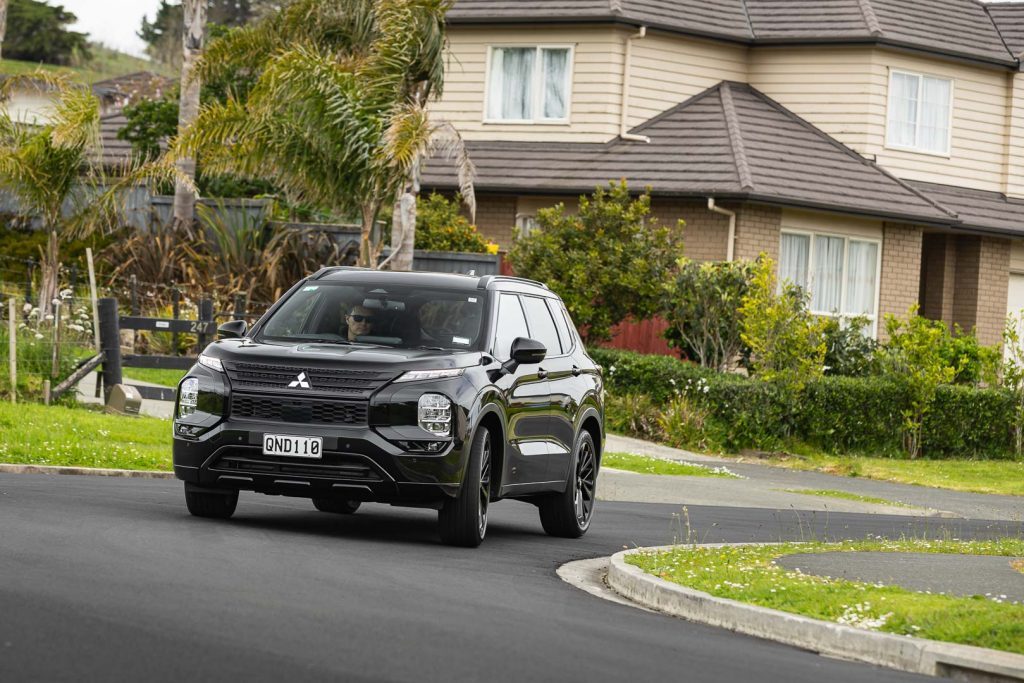
The 2.5 isn’t a torque monster; its Newt total is not fully spun until 3600rpm, so it lacks urge down low, requiring a few more revs to get things moving. However, once up to speed, the CVT can simmer things right back down, the Outlander loping along at 1200rpm in town.
The CVT’s response is a little hesitant when adding throttle, but kicks on eventually. It goes better in its Tarmac drive mode, a Sport setting by another name, but that won’t be good long term for fuel use. On that, expect to average in the 10-11L/100km range.
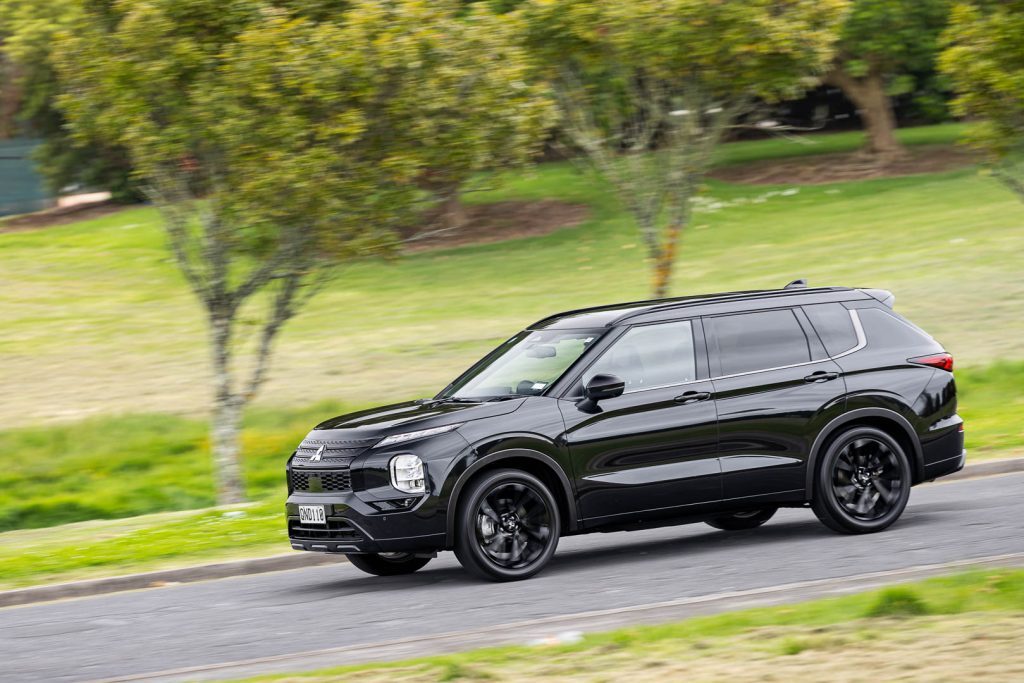
While the cabin is soft, the ride quality of the Exceed can be sharper than desired, and you definitely feel those edges. The steering is okay, easy on the weight, and the turning circle is acceptable. There’s good outward vision too, with decent side mirrors.
You still feel the bumps on the highway and tyre noise creeps up when running over coarser surfaces. Through the bends, there’s little interaction at the wheel, but no untoward vibrations either.
Outlander keeps itself tidy thanks to brake nipping that trims your corner lines to ensure it doesn’t run wide.
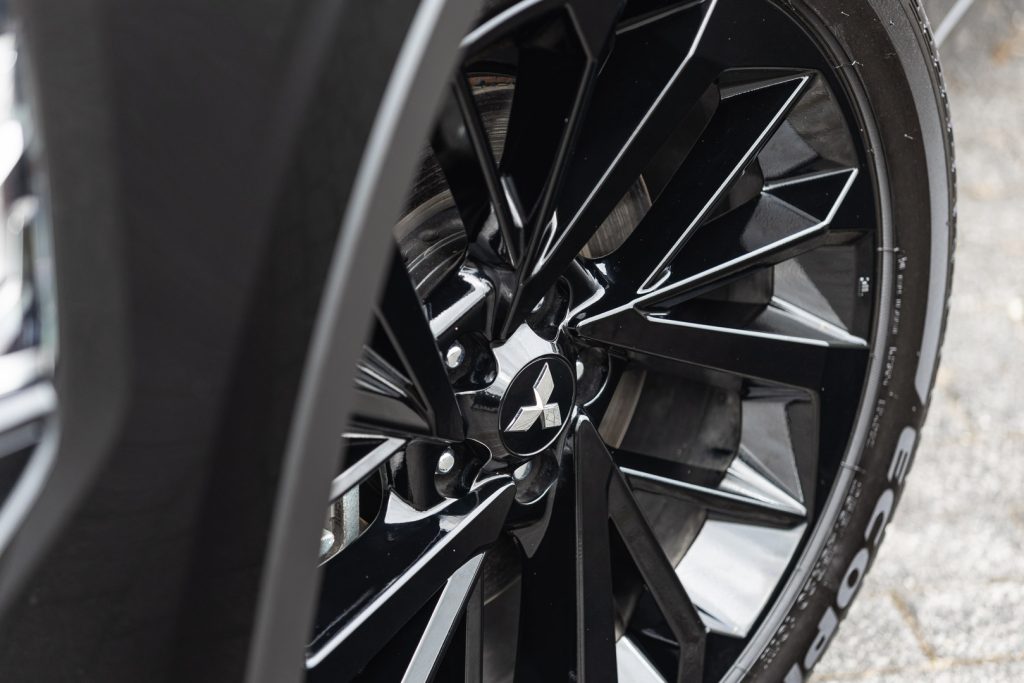
The AWD of this model gives it traction off the mark, good for those quick getaways at intersections.
Outlander is a decent option among the hordes of SUV offerings out there. It might not be the sharpest operator, but it is competitive on price and specification against other top spec runners.
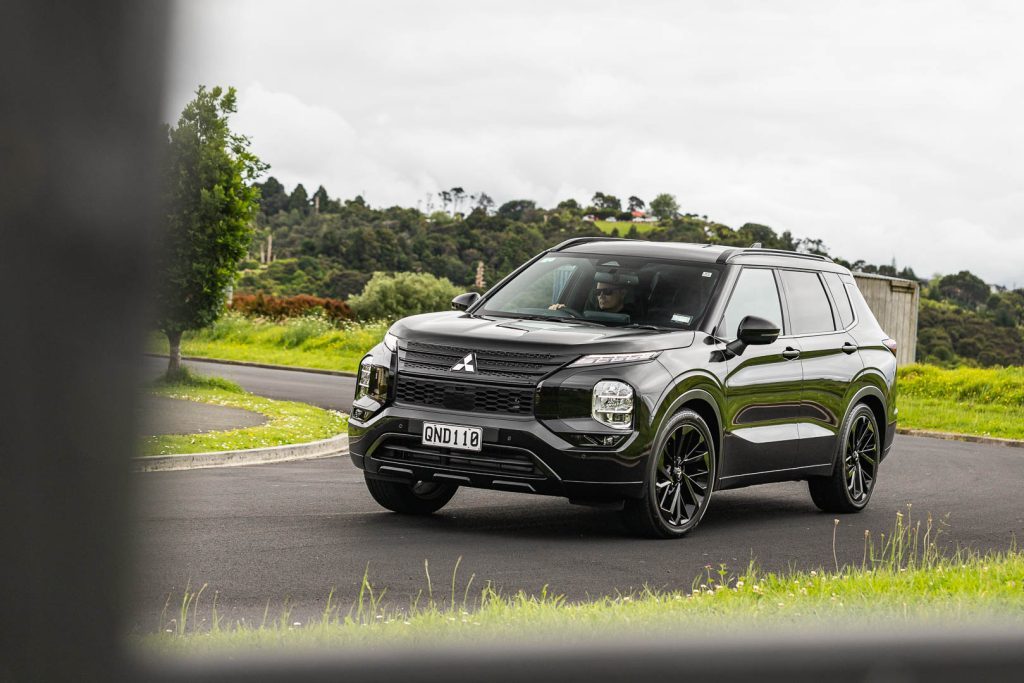
Looks good too, the safety spec is sound (without driving you nuts) as is the quality and it’s practical. A typical medium SUV then.
| Model | Mitsubishi Outlander 2.5 Exceed 4WD |
| Price | $61,990 |
| Engine | 2488cc / IL4 / DI |
| Power | 135kW@6000rpm |
| Torque | 244Nm@3600rpm |
| Drivetrain | CVT / on-demand AWD |
| Fuel Use | 9.0L/100km |
| C02 Output | 206g/km |
| 0-100km/h | 9.75sec |
| 80-120km/h | 6.64sec (190m) |
| 100-0km/h | 37.20m |
| Stability systems | ABS, ESP, TV |
| Safety | AEB, ACC, BSM, LDW, RCTA, ALK, AHB |
| Luggage Capacity | 478-1473L |
| Tow rating | 750kg (1600kg braked) |
| Fuel Capacity | 55L |
| Service intervals | 12 months/15,000 km |
| Warranty | 5 years/130,000km |
| ANCAP rating | 5 Stars (2022) |
| Weight | 1730kg (claimed) |
This article first appeared in the November 2024 issue of NZ Autocar magazine.


